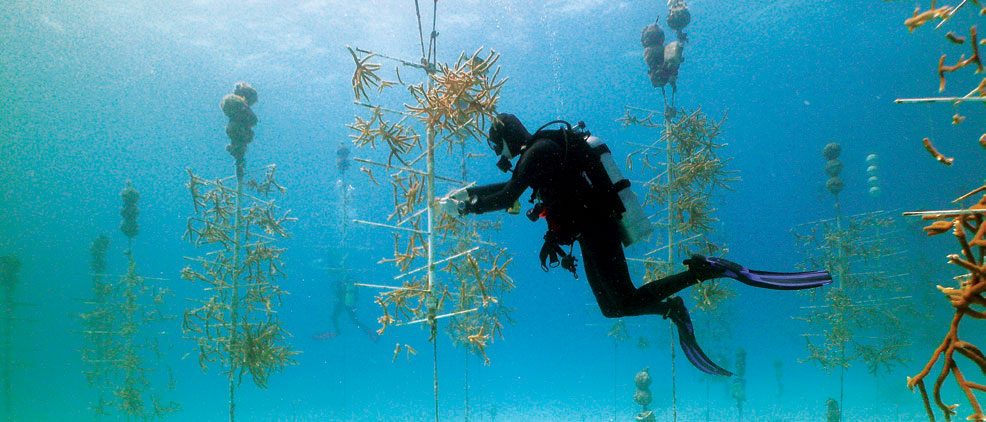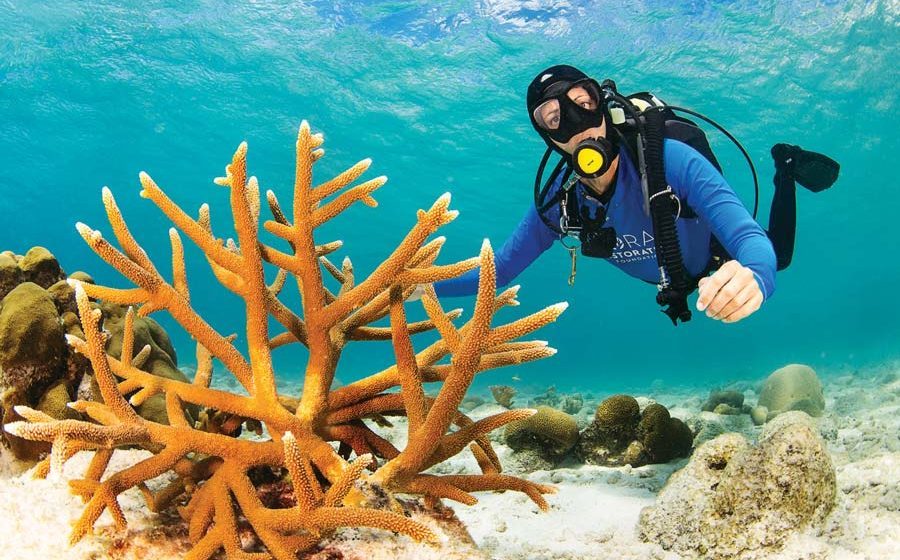

Transplanted juvenile coral grown in special nurseries on fibreglass trees may save damaged reefs.
Which is why scientists working with the Florida-based Coral Restoration Foundation (CRF) are attempting to stop the rot by creating coral ‘nurseries’ – where juvenile coral is grown in controlled conditions before being transferred to ‘take root’ on damaged reefs.
These marine farms – in many tropical locations around the planet – typically involve coral being grown on fibreglass trees.
“The idea is to give these coral populations a fighting chance,” says Jessica Levy, programme manager at CRF. “If you don’t put back the material and diversity that has been lost, the populations are going to crash and become extinct. For reefs, you’re looking at a global extinction of the ecosystem if things don’t change quickly.”

Florida has the world’s third largest barrier reef, with nearly 1,400 species of plants and animals and 500 species of fish. But the reef is vanishing. Research suggests about half the reef has disappeared over the past 250 years. Coverage of acropora, the primary genus of reef-building corals, has plummeted by 97%.
Climate change is a major threat. In 2014 a spike in water temperatures led to coral bleaching on Florida reefs – and again in 2015, as a prolonged global bleaching event gripped the planet’s reefs. Australia’s Great Barrier Reef was particularly badly affected.
CRF has accelerated its coral replanting programme with the deteriorating situation. Partnerships have formed to provide its fibreglass trees to places such as Jamaica and Colombia. Recently, some 100 corals were successfully planted on the Great Barrier Reef using the coral tree frames.
The largest of CRF’s nurseries, near the Key Largo coast, has around 500 trees.




